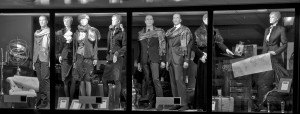” Luxury & digital have been strange and uncomfortable until Burberry changed it all….
Burberry wanted to do something different, so it created its own community inspired by its core product: the trench coat. The company describes the site ‘Art of the Trench’ as a living document of the trench coat and the people who wear it’. Between its launch in November 2009 and mid-2010 the site notched up more than 7M visits.
In recent years, the concept and ethos of luxury has changed dramatically from ‘slow’; ‘traditional’; ‘heritage’; ‘product focused’ to ‘gratification’; ‘hybrid’; ‘experiential’; ‘techno’; ‘sustainability’ etc.
Further, democratization of luxury has forced many luxury houses to trade down and introduce products and lines which could offer a sense of ‘owning luxury’ to a wider and aspirational audience.
Worldwide, luxury has been a hesitant acceptor of the digital medium. The need to be aristocratically exclusive made them ignore the internet. Not anymore – most brands realize that they cannot alienate themselves any further and are creating web based interactive platforms to disseminate information about their products, their designs and their inspirations. Digital engagement is changing the brand perception from ‘dictating’ the market to ‘learning’ from the market. No longer can luxury brands isolate themselves and claim to restrict to sell to a select few.
By doing this however, many cross the line between being exclusive and accessible, with the latter becoming the most important to many.
Besides, the very mediums that luxury brands traditionally used to reach out to their audience for example publications like a Vogue ; harpers Bazaar etc besides the good old news paper have all gone digital themselves.
So is there a choice or alternate anymore ??
Perhaps no. As they say, if you can’t beat them join them !
Luxury brands have a status to maintain and therefore, have to choose their platforms very carefully. Traditionally, the luxury market has been a seller’s market – consumers bought what the designers conceived and the brands offered. Now the scenario has changed. The buyer has a say – the brands have to be driven by consumer choice.
Digital boom has given consumer the authority to voice their opinion and change perceptions. One adverse statement by Dolce and Gabbana against IVF babies led to Elton John initiating a boycott which went viral in few hours. Many celebrities and their fans have boycotted D&G !
In this scenario, how does one strike a careful balance between targeting the luxury clientele online without succumbing to digital mass marketing?
Over the last few years, luxury brands have increased their presence on social media: a 73% increase on Pinterest, 53% on Google + and 47% on Instagram.
Being on such mass audience sites is not necessarily negative if handled the right way. If not, then this form of ‘everywhere targeting’ can be increasingly harmful to a brand’s identity.
To avoid this ‘watering down’ effect, there must be a focused and highly strategic approach for luxury brands wishing to stay true to their position of authority.
The consumers today want to be engaged and the younger millennial generations having ever more buying influence are fearless to try new forms of communication. The key focus therefore must be to build brand desire for both current and new consumers, without becoming too accessible to the mainstream.
Despite the internet users in the world are increasing every year, the online retailing market is relatively smaller.World’s online transactions are less than 7% of overall retail sales. E retailing could help a luxury brand to reach consumers where they don’t physical presence. The luxury segment in the world is quite unexplored and with the right online strategy, brands can create visibility & target the niche clientele as well.
Real estate, automobiles, fashion, jewelers, accessories, groceries, travel tickets, education, holidays, fine dining, and now even yachts are being sold on line. ”



